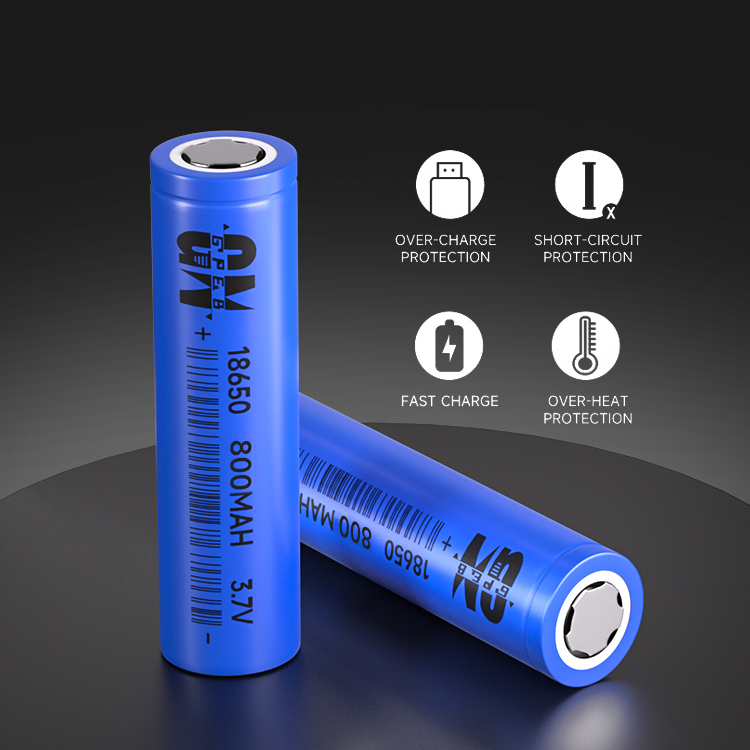

According to foreign media reports, researchers from Argonne National Laboratory collaborated with the Wolverton group at Northwestern University to jointly develop lithium iron oxide rechargeable batteries.
Core Tip: According to foreign media reports, researchers from Argonne National Laboratory collaborated with the Wolverton Group of Northwestern University in the United States to jointly develop lithium iron oxide rechargeable batteries. Compared with common lithium cobalt oxide batteries, the movement of lithium ions is larger. This is due to its larger electric capacity, which extends the battery life of electric vehicles. Through numerical calculations, Wolverton and Yao discovered a new formula whose chemical reaction is reversible. First, the research team replaced cobalt with iron because iron is the cheapest metal element in the chemical periodic table. Subsequently, through calculations, they found the correct balanced ratio of lithium, iron and oxygen ions, so that oxygen ions and iron ions can promote reversible reactions at the same time without causing the release of oxygen.
According to foreign media reports, researchers at Argonne National Laboratory collaborated with the Wolverton group at Northwestern University to jointly develop a lithium iron oxide rechargeable battery (lithium ion iron oxide battery, rechargeablelithium -iron-oxidebattery). Compared with common lithium cobalt oxide batteries (lithium-cobalt-oxide rechargeable batteries, lithium-cobalt-oxide counterpart), the movement of lithium ions is larger. This is due to its larger electric capacity, which extends the battery life of electric vehicles.
The research was supported by the Energy Frontier Research Center project under the U.S. Department of Energy, and its research results were published in Nature Energy. Zhenpeng Yao, a doctoral student in the Wolverton Laboratory and the Argonne Laboratory Postdoctoral researcher ChunZhan is the first author of this research paper. Wolverton and Yao are responsible for computational research and development, while Argonne Laboratory is responsible for the experimental aspects of the research.
During the charging and discharging process of the battery, lithium ions move back and forth between the anode and cathode. When the battery charges, the lithium ions return to the anode and are stored there. The cathode of the battery is made of a composite containing lithium ions, transition metals and oxygen elements.
Typically, cobalt is used as the transition metal, which can efficiently store and release electrical energy when lithium ions move back and forth from the anode to the cathode. The capacitance of the cathode is limited by the number of electrons in the transition metal, which will participate in the chemical reactions within the battery.
Lithium cobalt oxide batteries have been on the market for 20 years, however, often after long-term studies, researchers have discovered another relatively cheap rechargeable battery with a higher capacity. The research team at Wolverton Laboratory improved the performance of ordinary lithium cobalt oxide batteries by using two new strategies: replacing cobalt with iron and forcing oxygen to participate in chemical reactions.
If oxygen can be stored and electrical energy released, the battery capacity will naturally increase and more lithium ions can be stored and utilized. Although other research groups have done similar studies, few have been successful.
Through numerical calculations, Wolverton and Yao discovered a new formula whose chemical reaction is reversible. First, the research team replaced cobalt with iron because iron is the cheapest metal element in the chemical periodic table. Subsequently, through calculations, they found the correct balanced ratio of lithium, iron and oxygen ions, so that oxygen ions and iron ions can promote reversible reactions at the same time without causing the release of oxygen.
More importantly, the battery starts with four lithium ions instead of one, which will increase the battery's capacity. The iron and oxygen will drive the battery to react, allowing four lithium ions to move back and forth between the anode and cathode of the battery.

Popular recommendation
battery aaa alkaline.Research progress on metallurgical treatment of waste nickel-cadmium batteries
2023-10-09Ni-MH battery packs.Circuit to eliminate the memory effect of nickel-cadmium batteries
2023-10-09Which is better, lithium battery or lead-acid battery?
2022-11-18902030 polymer battery.ROHM's Nano Energy technology helps button batteries achieve 10-year driving
2023-10-09601248 lipo battery.Landsdowne Labs develops new materials to make swallowing button batteries no lo
2023-10-0918650 battery pack 3.7v.How to maintain 18650 lithium battery.
2023-10-13Three signs that battery energy storage systems CR2450 battery.have become the mainstream of energy
2023-10-08AG Coin battery
2022-06-18AA Ni-MH battery.Polymer lithium-ion battery technology
2023-10-09AG Coin TV environmental impact
2022-06-18AG3 battery!How should my country develop in the face of the leading fuel cell technologies of Japan
2023-10-0818650 lithium-ion battery.Two major reasons affect the service life of 18650 lithium battery.
2023-10-13